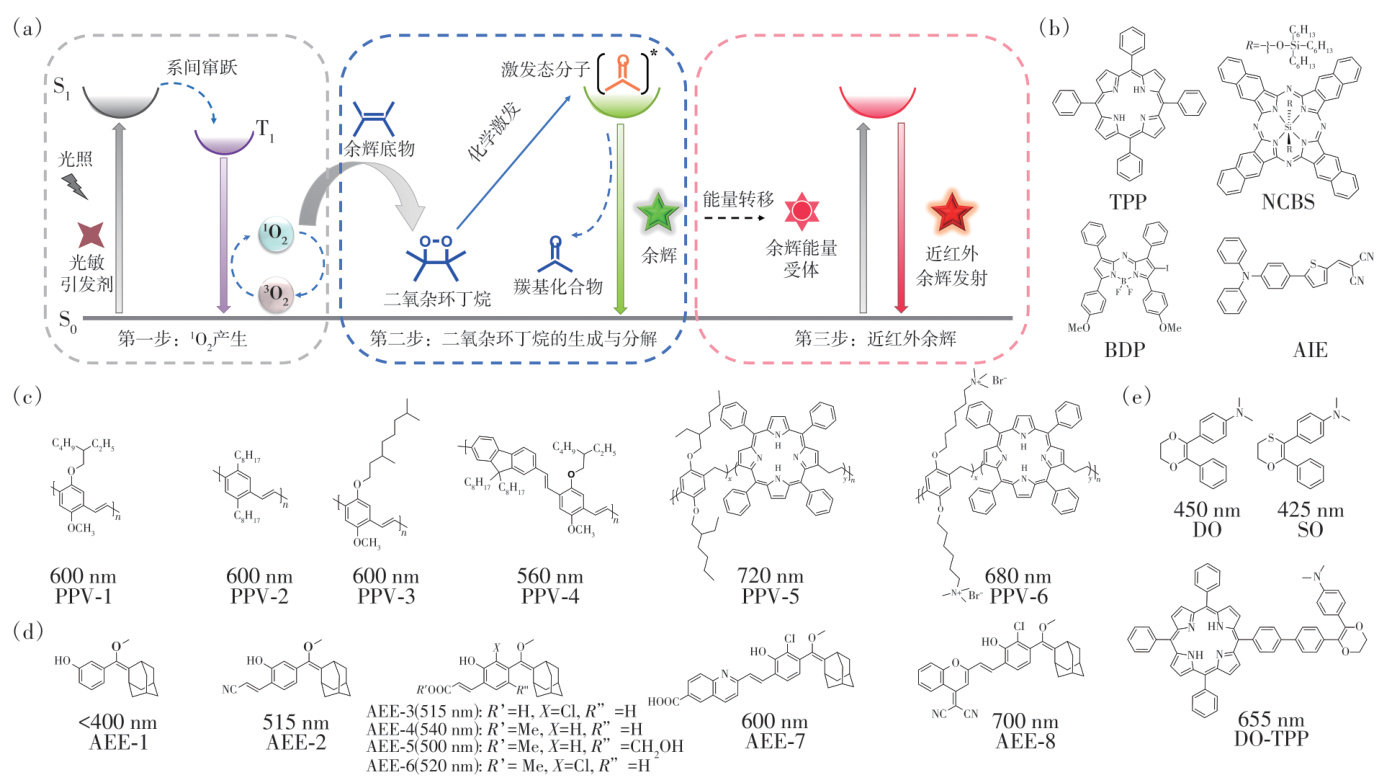基于二氧杂环丁烷中间体的余辉发光材料构建与生物成像研究进展


打开文本图片集
中图分类号:O482. 31 文献标识码: ADOI:10. 37188/CJL. 20240284 CSTR:32170. 14. CJL. 20240284
Research Progress in Development of Dioxetane Intermediates-based Afterglow Luminescent Materials and Their Applications in Bioimaging
WANG Nannan1,JI Shenglu1,DING Dan2* ( The Key Laboratory of Biomedical Materials,School of Life Science and Technology, Xinxiang Medical University,Xinxiang 453003,China; 2. Frontiers Science Center for New Organic Matter,State Key Laboratory of Medicinal Chemical Biology,Key Laboratory of Bioactive Materials,Ministry of Education,College of Life Sciences,Nankai University,Tianjin ,China) * Corresponding Author,E-mail:dingd@nankai. edu. cn
Abstract:The afterglow imaging technology avoids the interference of biological tissue autofluorescence and has ul⁃ tra-high imaging signal-to-noise ratio,showing great application prospects in the field of biomedical imaging. The generation and decomposition of high-energy dioxetane intermediates enable the storage and release of light energy. As a result,afterglow materials that can be oxidized by singlet oxygen to form dioxetane intermediates exhibit pro⁃ longed luminescence. The dioxetane intermediates-based afterglow luminescent materials have good biocompatibility and structural diversity,and can extend the afterglow emission range and enhance afterglow intensity through struc⁃ tural modification,achieving more accurate afterglow imaging. This review summarizes the luminescence mechanism and construction strategies of dioxetane-based afterglow materials,introduces the design strategies of multi-compo⁃ nent and single-molecule afterglow materials,and discusses in detail the reported afterglow substrates and their lumi⁃ nescence mechanisms. Moreover,the design strategies of afterglow nanoprobes and their latest developments in disease diagnosis,biosensing,and imaging were discussed and classified. Finally,the challenges and future devel⁃ opment prospects of this type of material in clinical translation were analyzed.
Key words:afterglow luminescence;dioxetane;afterglow material;disease diagnosis;biological imaging
1 引 言
光学成像技术具有灵敏度高、生物相容性好、时空分辨率高和实时可视化等优点,通过光学图像从微观和宏观层面揭示生物过程,在疾病的早期诊断和治疗中发挥着重要作用[1-5]。(剩余34610字)